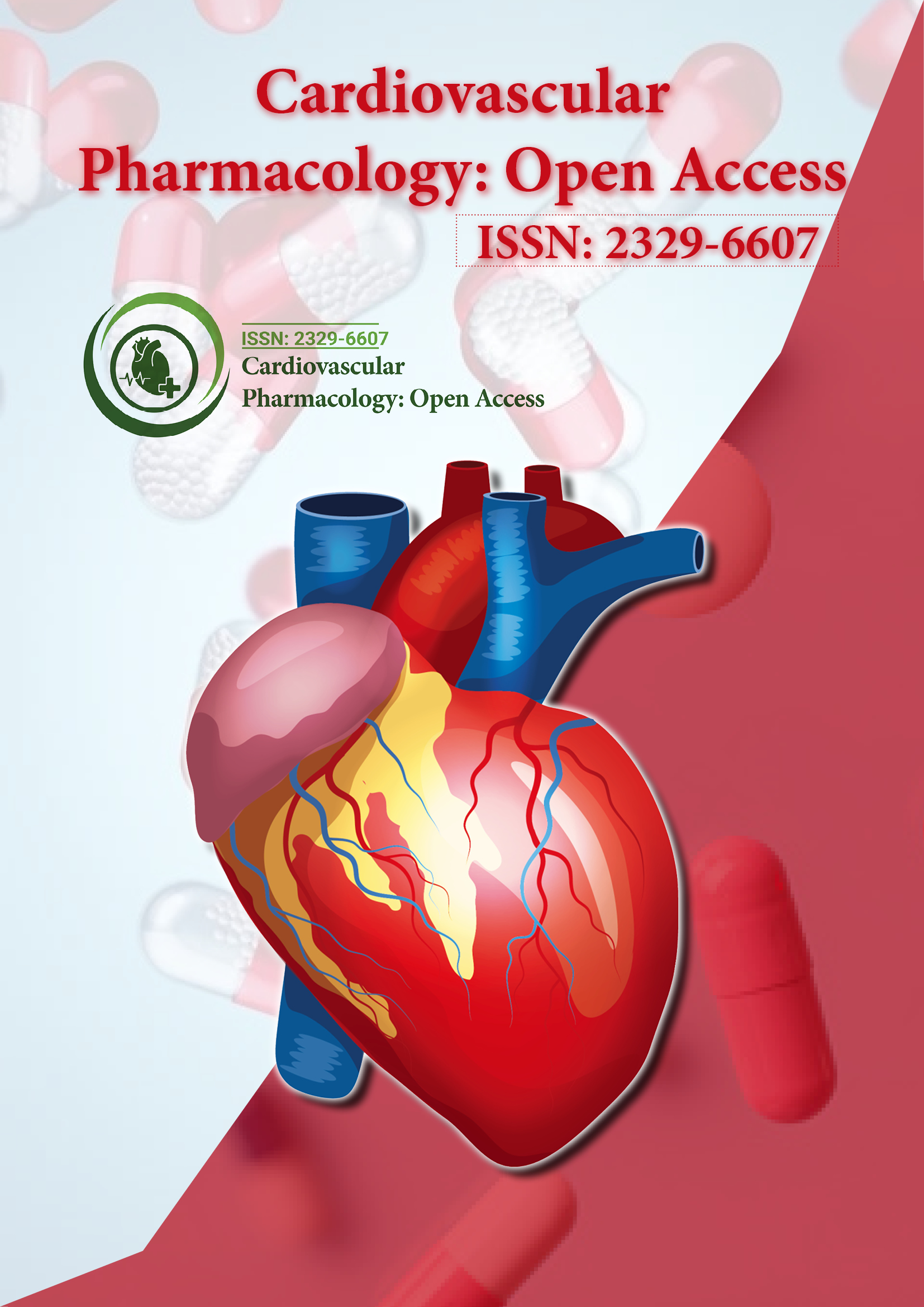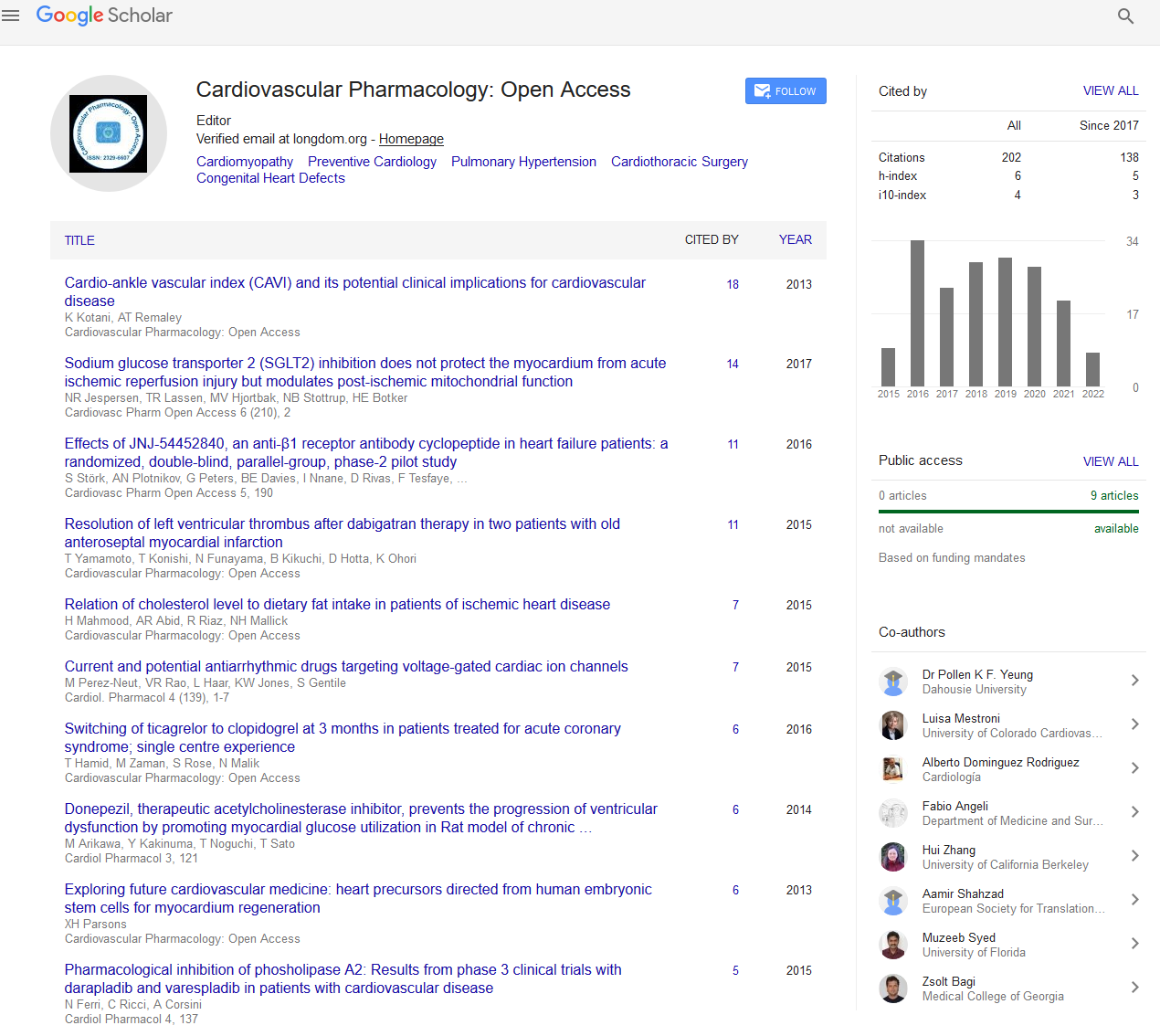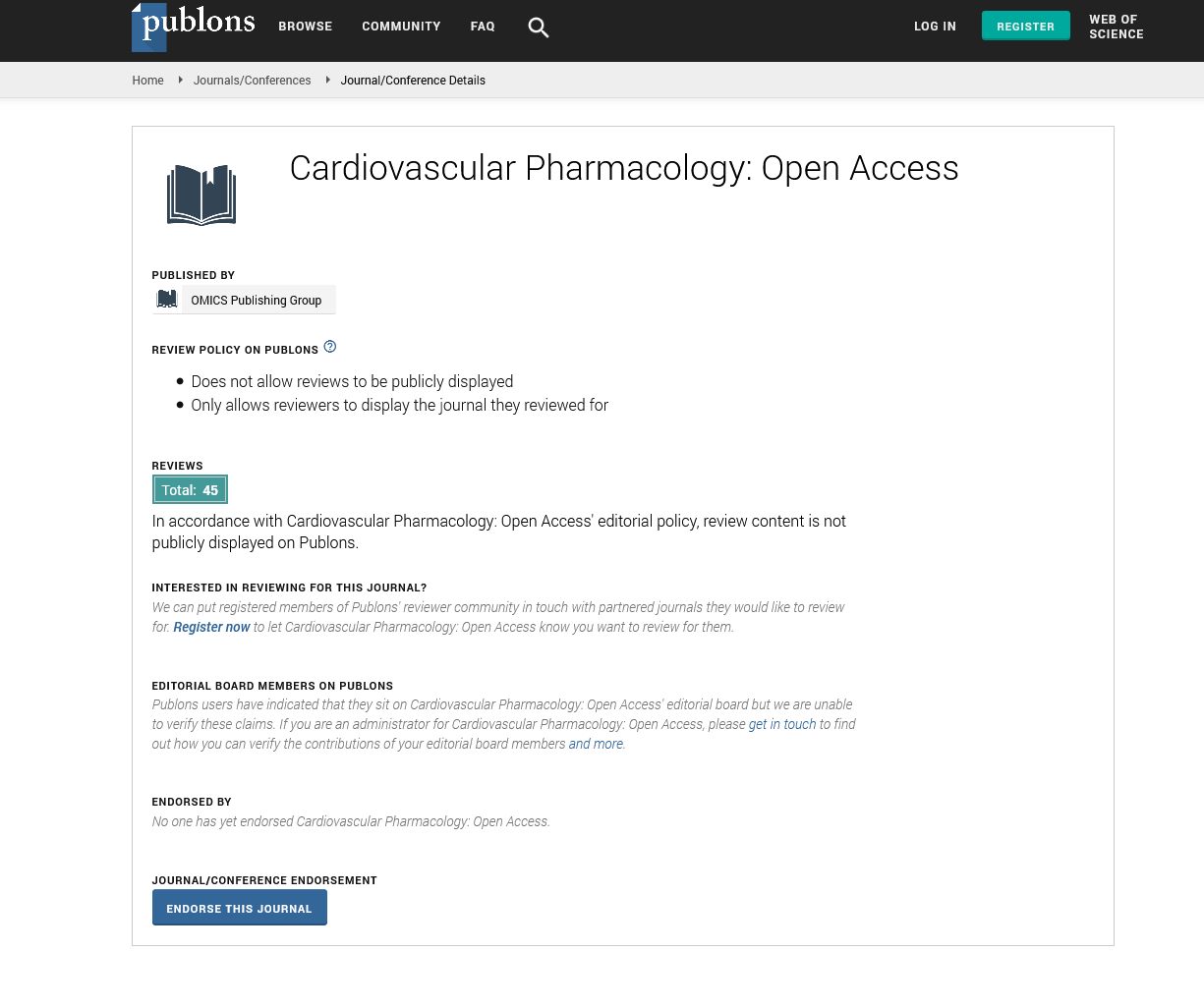Indexed In
- Open J Gate
- Cosmos IF
- RefSeek
- Hamdard University
- EBSCO A-Z
- OCLC- WorldCat
- Publons
- Geneva Foundation for Medical Education and Research
- Euro Pub
- Google Scholar
Useful Links
Share This Page
Journal Flyer

Open Access Journals
- Agri and Aquaculture
- Biochemistry
- Bioinformatics & Systems Biology
- Business & Management
- Chemistry
- Clinical Sciences
- Engineering
- Food & Nutrition
- General Science
- Genetics & Molecular Biology
- Immunology & Microbiology
- Medical Sciences
- Neuroscience & Psychology
- Nursing & Health Care
- Pharmaceutical Sciences
Perspective - (2024) Volume 13, Issue 3
Pharmacological Interventions in Restrictive Cardiomyopathy: Historical and Scientific Perspectives
Noah Patel*Received: 30-Aug-2024, Manuscript No. CPO-24-27836; Editor assigned: 02-Sep-2024, Pre QC No. CPO-24-27836 (PQ); Reviewed: 16-Sep-2024, QC No. CPO-24-27836; Revised: 23-Sep-2024, Manuscript No. CPO-24-27836 (R); Published: 30-Sep-2024, DOI: 10.35248/2329-6607.24.13.405
Description
Restrictive Cardiomyopathy (RCM) is a form of heart disease characterized by myocardial stiffness, which impedes the heart's ability to fill with blood during relaxation. This condition can cause significant morbidity and mortality, requiring appropriate pharmacological intervention. Over the years, researchers and clinicians have explored various pharmacological therapies to relieve symptoms and prevent disease progression. This article provides a comprehensive overview of the drugs used in RCM, discusses historical developments in the field, highlights important contributing factors and considers the positive and negative aspects of these interventions.
Understanding of RCM has evolved considerably since the first descriptions of heart disease in the 19th century. Initially, RCM was often misclassified among other cardiomyopathies due to its varied presentation and underlying etiology, including diseases such as amyloidosis, sarcoidosis and hemochromatosis. The advent of advanced imaging techniques in the late 20th century, particularly echocardiography and Magnetic Resonance Imaging (MRI), has made notable contributions to our understanding of the pathology and pathophysiology of various cardiomyopathies, including RCM.
Pharmacological management of RCM is largely symptomatic, with medications used to treat symptoms of Heart Failure (HF) and to control underlying conditions contributing to RCM. The foundation of treatment often involves diuretics, which help to reduce fluid overload, a common manifestation in patients with RCM. Loop diuretics, such as furosemide, are instrumental in the management of obstructive symptoms. Beta-blockers, such as metoprolol, have also been used to control heart rate and improve diastolic filling through negative chronotropic effects and reduced myocardial oxygen demand. ACE inhibitors, including enalapril, may be useful in improving cardiac output and reducing afterload, although their use must be customized to individual hemodynamics. In addition, novel therapies such as hormone modulation and targeted therapy are being explored. Emerging evidence from studies of neprilysin inhibitors has suggested a potential role for this patient population, although further research is needed to establish their safety and efficacy in RCM.
The use of pharmacological agents in RCM has provided notable benefits. Diuretics significantly reduce the incidence of acute pulmonary edema and improve exercise capacity in affected individuals. Beta-blockers have been shown to improve quality of life by reducing symptoms and may improve long-term survival in some patients. In addition, the discovery and development of Angiotensin Receptor-Neprilysin Inhibitors (ARNIs) signal a promising future for the management of RCM, as early clinical trials have demonstrated improvements in functional status and reduced hospitalization rates.
Despite the advantages, drug treatment of RCM is not without challenges. Disease heterogeneity often complicates treatment regimens. In patients with infiltrative diseases such as amyloidosis, traditional heart failure medications may have limited efficacy or may exacerbate cardiac dysfunction if not administered carefully. Additionally, drug side effects, including electrolyte imbalance and impaired renal function associated with diuretics, require careful monitoring and may limit longterm use.
In addition, the risk of drug interactions, particularly in older patients who may be taking multiple medications, presents a challenge to maintaining optimal therapy. The lack of strong clinical trials specifically testing drug therapies in the RCM population further limits clinicians’ ability to ensure evidence based practice, leading to variability in treatment.
In conclusion, exploring the history and science of pharmacological interventions in restrictive cardiomyopathy reveals a complex landscape filled with both opportunities and challenges. Although advances in drug therapy have significantly improved the management of this multifaceted disease, continued research is needed to refine treatment modalities and optimize patient outcomes. Contributions from influential figures in the field of cardiology have laid the foundation for a fundamental understanding that continues to evolve, providing hope for improving the quality of life of people with RCM. Multidisciplinary collaboration and continued funding of research in this specialized area will be essential to overcome existing challenges and realize the full potential of pharmacotherapy in restrictive cardiomyopathy.
Citation: Patel N (2024). Pharmacological Interventions in Restrictive Cardiomyopathy: Historical and Scientific Perspectives. Cardiovasc Pharm. 13:405.
Copyright: © 2024 Patel N. This is an open access article distributed under the terms of the Creative Commons Attribution License, which permits unrestricted use, distribution and reproduction in any medium, provided the original author and source are credited.


